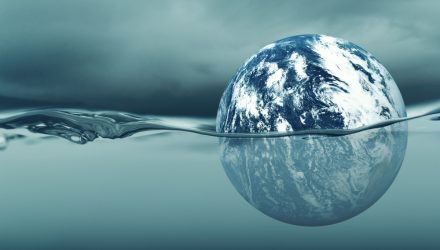Greenwashing, impact investing, diminished returns, intangibles — the list goes on and on about the conversations the financial world has been having around ESG (environmental, social, and governance) investing and if ESG-themed products are worth it. The conversation has been going back decades, but we’ve reached a critical juncture with global warming where the environmental component is going to drive and impact all investments in the future if change doesn’t happen.
There’s unending academic literature being published about the dangers of a warming world, the impacts of increasingly intense weather events, the heat distribution, and the impact of increasing heat on populations, but a shortcoming that many of them have is that they tend to look at these individual impacts and risks through a singular or narrow lens.
Shi-Ling Hsu, a professor of law at Florida Sate University’s College of Law, tackles this very shortcoming in a forthcoming public law paper being published and currently available on SSRN, regarding the increasingly exponential risk that climate change poses on a global scale. The research looks at the cumulative effects of climate events, their impacts on susceptible populations, and how those impacts themselves provide a cumulative effect that causes populations that were once less at-risk to become susceptible to climate impacts.
“Climate change is often described as a ‘threat multiplier,’ exacerbating extant threats and making them more dangerous. The cumulation of multiple climate catastrophes affect entire systems of production and distribution,” Hsu wrote. “Everything will be harder or more costly to obtain. That is the nature of climate insecurity, and it has arrived.”
One example Hsu examines is the failure of the power grid in Texas over the winter of 2021 and its cost on human lives as well as the infrastructure impact of power loss and food shortage. Texas is currently under the effects of an extreme heatwave that is pushing this same power grid once more beyond the limits. The megadrought that is currently impacting the Southwest U.S. is also covered; it’s the worst in 1200 years.
Catastrophic weather is being experienced globally, with news of droughts, fires, and record heat a constant barrage as much of the Northern Hemisphere struggles with weather impacts this summer. As communities, industries, economies, and nations grapple with the impacts of these weather events, any shortages or reductions in production will have far-reaching impacts. String together a bunch of these impacts occurring on an increasingly frequent basis into the global economy, and suddenly everyone feels the effects.
“What all societies, even affluent ones, must now grapple with is a powerful threat that has already buckled some societies: the increasingly disruptive effects of climate change on the human economy, and its ability to sustain people,” Hsu concluded.
The paper goes on to try to calculate a model for scarcity, the climate insecurities that the U.S. could potentially face, the impacts of cumulative insecurities, and potential policies to ensure base-level survivability for the human population.
Investing in Change
Economies, markets, investors, and individuals are going to increasingly feel the squeeze of global warming impacts. This has been happening since the 1980s within commodities futures, and it’s going to become increasingly systemic. There are a lot of different ways to invest in emissions reductions, and KraneShares offers a comprehensive variety of strategies that offer global carbon market exposure, targeted market exposure, exposure to the voluntary carbon markets, and a way to invest in the companies driving genuine change in some of the dirtiest industries that could be a huge boon in the fight against climate change.
KraneShares has a suite of ETFs with a variety of targeted exposures to global cap-and-trade carbon allowance markets that invest in carbon credit futures. These funds include the KraneShares Global Carbon Strategy ETF (KRBN), which invests in carbon allowances futures globally from the EU, California markets, RGGI, and the U.K., as well as the more targeted KraneShares European Carbon Allowance Strategy ETF (KEUA) and the KraneShares California Carbon Allowance Strategy ETF (KCCA).
KraneShares also offers the first U.S. ETF exposure to the voluntary carbon offset markets through the KraneShares Global Carbon Offset Strategy ETF (KSET), as well as the KraneShares Global Carbon Transformation ETF (KGHG) that seeks to capture the true potential within the carbon transition by focusing on companies from within industries that are traditionally some of the highest emission offenders but that are on the precipice of transitioning to renewable technologies.
For more news, information, and strategy, visit the Climate Insights Channel.

